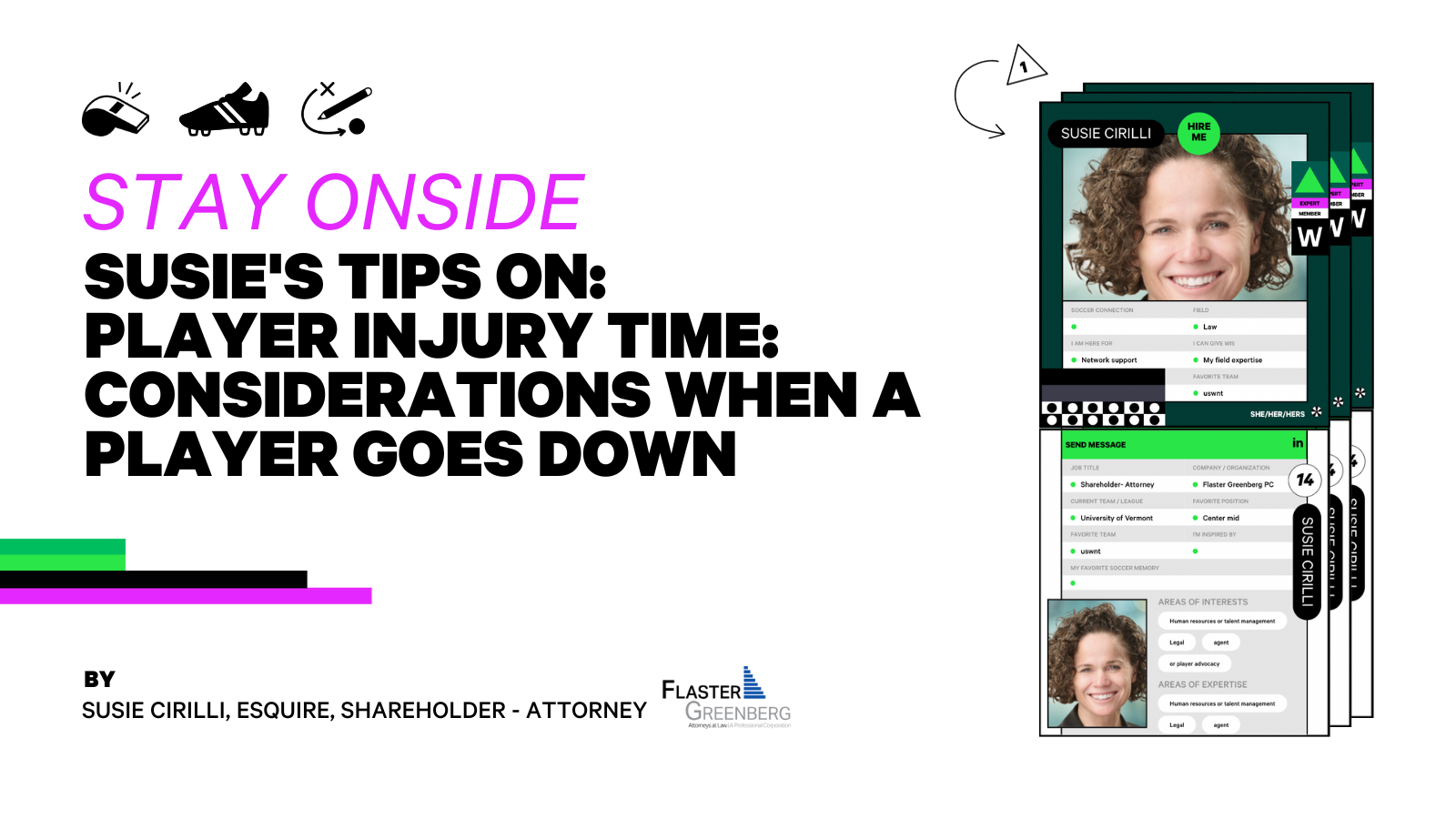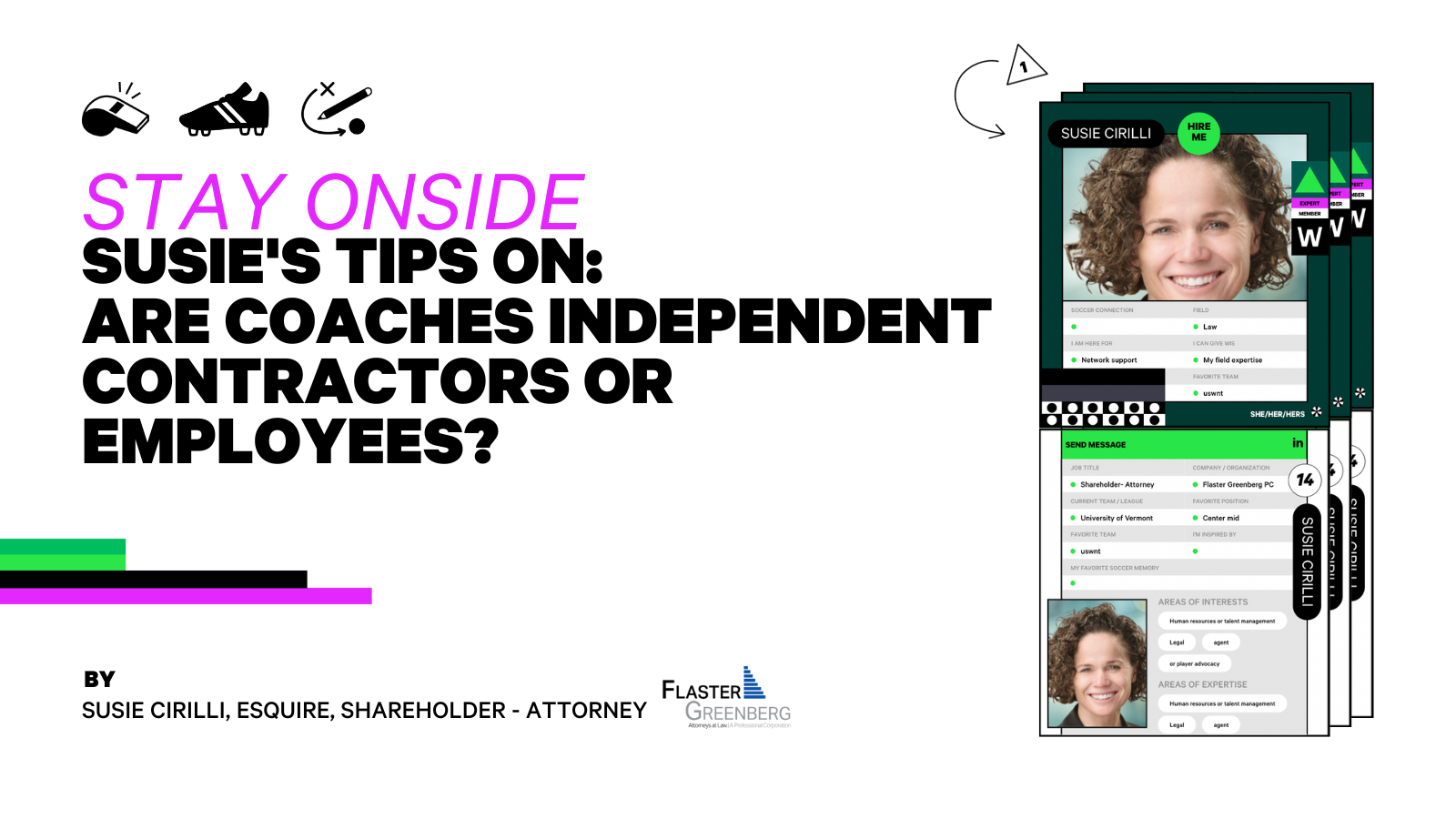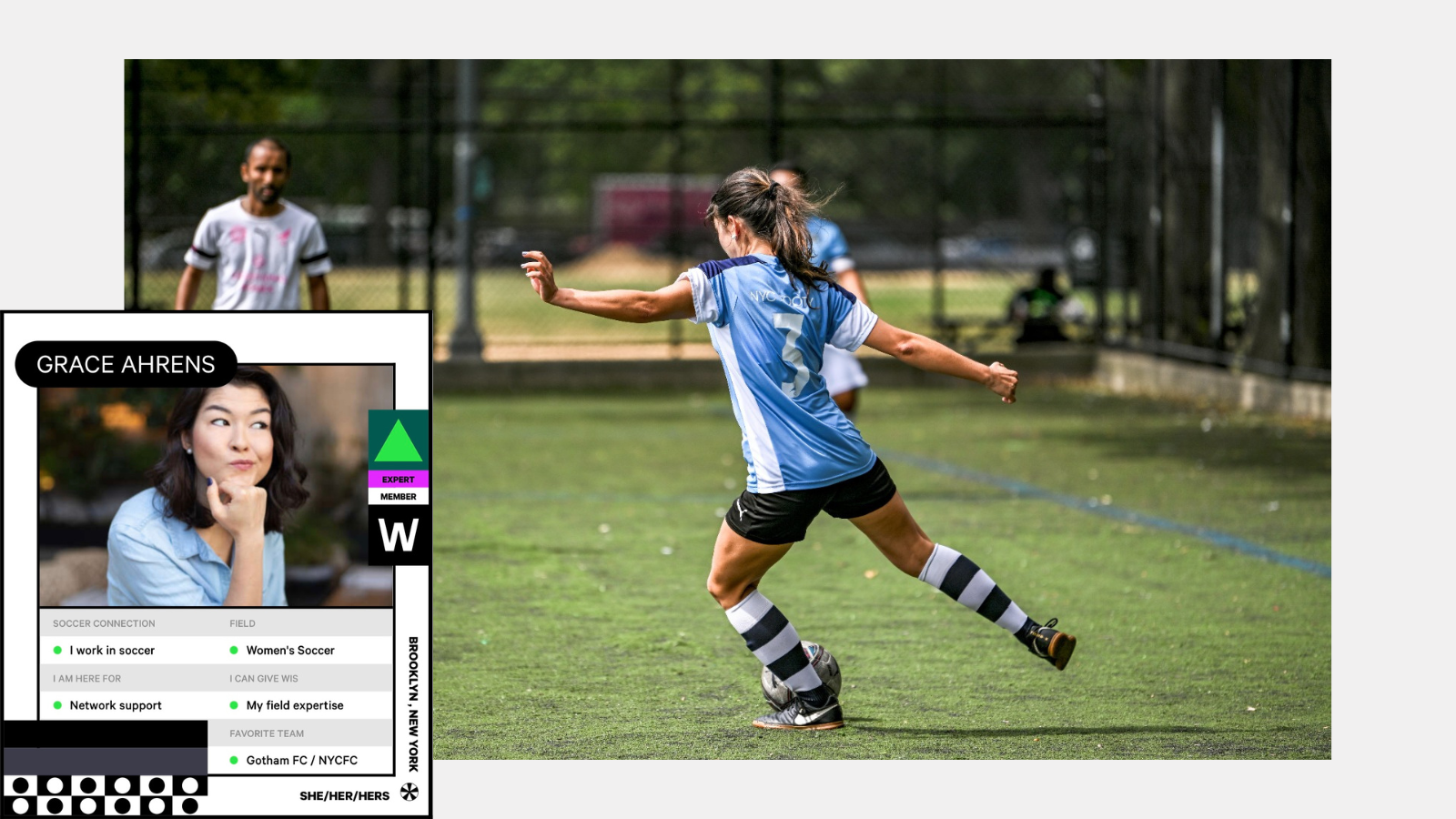INJURY TIME: CONSIDERATIONS WHEN A PLAYER GOES DOWN
From youth soccer to professional soccer, players get injured. At the professional level, there are key considerations for clubs to keep in mind when one of their players goes down. Let’s take a look at some of the legal implications when a player goes down…
What Happens if a Player Refuses Treatment?
We see it almost every game: a player goes down and then tries to get up but can’t. The play stops, and the trainers go out onto the field. The player insists that she is fine. She repeats to the trainers that she does not want to be reviewed. So what then? What happens?
There is a legal basis for why the club has the right to conduct the medical examination on the field. Let’s look at the legal basis for why the club (trainer) has the right to examine the employee (player).
Before we get started, let’s get some definitions out of the way. Prudent clubs will understand their obligations and rights to conduct “medical examinations” and “medical inquiries.” Let’s quickly review:
- Medical Examination: This is a procedure or series of tests that seek information about an individual’s physical or mental impairment or health.
- Medical Inquiry: A question or series of questions that is likely to elicit information about a disability.
So, when a trainer is on the pitch and is asking the potentially injured player a series of questions, the trainer is conducting a Medical Inquiry. After all, the trainer is asking questions that are likely to elicit information about a disability. It must be noted that whether the player is actually disabled does not matter. If the trainer is asking questions that could elicit information about a disability, it is a Medical Inquiry under the ADA.
Next, a trainer performs a medical examination on a player when they conduct manipulations or test for mobility. Some may argue that the trainers are not physicians. Therefore, it cannot be a medical inquiry.
Ok so back to our original question…Does the club have the right to conduct these medical inquiries and examinations on the field? The answer is YES.
The Americans with Disability Act (ADA) sets out the following:
- Job-Related and Consistent with a Business Necessity. A covered entity (Club) cannot require a medical examination unless it is shown to be job-related and consistent with a business necessity.
In the case of the injured player, the on-field medical examination is job-related and consistent with the business necessity of playing the match.
Clubs must remember that their trainers are employees of the club. It follows that when a trainer conducts these examinations on a player, it falls under an employer medical examination or inquiry.
What do Clubs Do with Player Medical Information?
#1: Keep it Confidential
A common misconception is that HIPAA applies to all employee medical information. We must remember that HIPAA applies to (1) healthcare plans, (2) healthcare clearinghouses, and (3) medical providers. Clubs must be looking to the ADA for guidance on what to do with player medical information- not HIPAA.
The ADA regulations are clear: “Information obtained [through a medical examination] shall be collected and maintained on separate forms and in separate medical files and be treated as confidential medical records…” Clubs must keep all player medical information confidential.
NOTE: HIPPA applies to a healthcare provider that is providing information to the club. When the club receives the information, they must abide by the ADA and any applicable data-sharing agreement with a healthcare provider.
Now, there are exceptions to the “confidentiality rule” set out by the ADA. The Act explains that the following people can be made aware of the medical information. The law reads as follows:
- Supervisors and Managers. Supervisors and managers may be informed regarding necessary restrictions on the work or duties of the employee and necessary accommodations.
EXAMPLE: A player goes down and needs to get her hip popped back into place. The trainers and medical team evaluate her and decide that she can re-enter the game but for only 20 minutes. This is an example of the medical team informing the manager (coach) of a limitation.
#2: Trainer the Trainers!
Prudent clubs with ensure that their trainers are aware of the implications of the ADA. Trainers must understand the concept of employee confidentiality. Discussing a player’s injury with other players is violative of the ADA.
EXAMPLE:
- Player goes down during the game.
- She gets taken off the field.
- After the game, all the players gather around the trainer for information. Asking what happened.
- The trainer cannot divulge confidential medical information to the other players. This would be violative of the ADA.
#3: What about Injury Reports?
Many clubs publish injury reports to update their fans on the status of the player. This can be done; however, clubs must ensure that players have executed a valid waiver. Prudent clubs will consult with counsel to ensure that these waivers are fair and can withstand arguments of procedural and substantive unconscionability.
What if the Player Cannot Play Because of an Injury from Practice or a Game?
#1: Notify Workers Compensation Carrier
When a player is so injured that they cannot play (work), then it is crucial for teams to notify their worker’s compensation insurance carrier. Workers’ compensation covers work-related incidents that occur on the job. State law covers workers’ compensation, and most states require employers to obtain workers’ compensation insurance.
Do Clubs and Leagues Need to Keep Track of These Injuries?
YES. The Occupational Safety and Health Administration enforces the laws on worker safety. The body of regulations that govern worker safety is the Occupational Safety and Health Act (OSHA).
NOTE: In addition to the federal statute, some states have their own “OSHA’s” lovingly called “mini-OSHA.” Cautious clubs will consult with counsel to ensure compliance with their jurisdiction. We’ll just focus on the federal OSHA.
OSHA requires employers to keep records of fatalities, injuries and illnesses. Now, in order for an incident to be “recordable,” there is a three-pronged test employed:
- Employer must record incidents that are (1) work-related, (2) a new case, and (3) meet one or more of the general recording criteria. (Check out the hyperlinked regulations that explain what each phrase means.)
Briefly, the “general recording criteria” referenced above set out scenarios that warrant recording, which are, among other things: (1) death, (2) days away from work, (3) restricted work, (4) medical attention beyond first aid, (5) loss of consciousness.
BOTTOM LINE: The bottom line is that every time a trainer tends to a player on the field, it does not warrant a recording. However, should a player lose consciousness or require medical attention beyond a trainer, then that is most likely recordable. (NOTE: Remember, all three prongs of the test outlined above must be satisfied.)
Lawful leagues and clubs will consult with counsel to ensure that they are complying with the federal OSHA and any “mini-OSHA’s” that might apply.
OSHA 300 LOG: Lastly, OSHA requires employers to maintain an OSHA 300 Log that tracks each recordable incident. Check out the OSHA Log here.
OSHA 301 FORM: Employers must also complete an OSHA 301 Incident report within seven days after a recordable incident. Check out this form here.
OSHA ANNUAL SUMMARY (300A): Lastly, employers must publish a summary of the work-related incidents, injuries, and fatalities. This must be posted for all employees to see on an annual basis.
**All referenced OSHA forms are included in this Excel spreadsheet.
FINAL THOUGHTS: Employers (clubs and leagues) must always bear in mind the various laws that apply to player safety and health. This blog discusses just a few. Administrators of clubs must ensure that they are well-versed in the various legal obligations both at the federal and state level.






